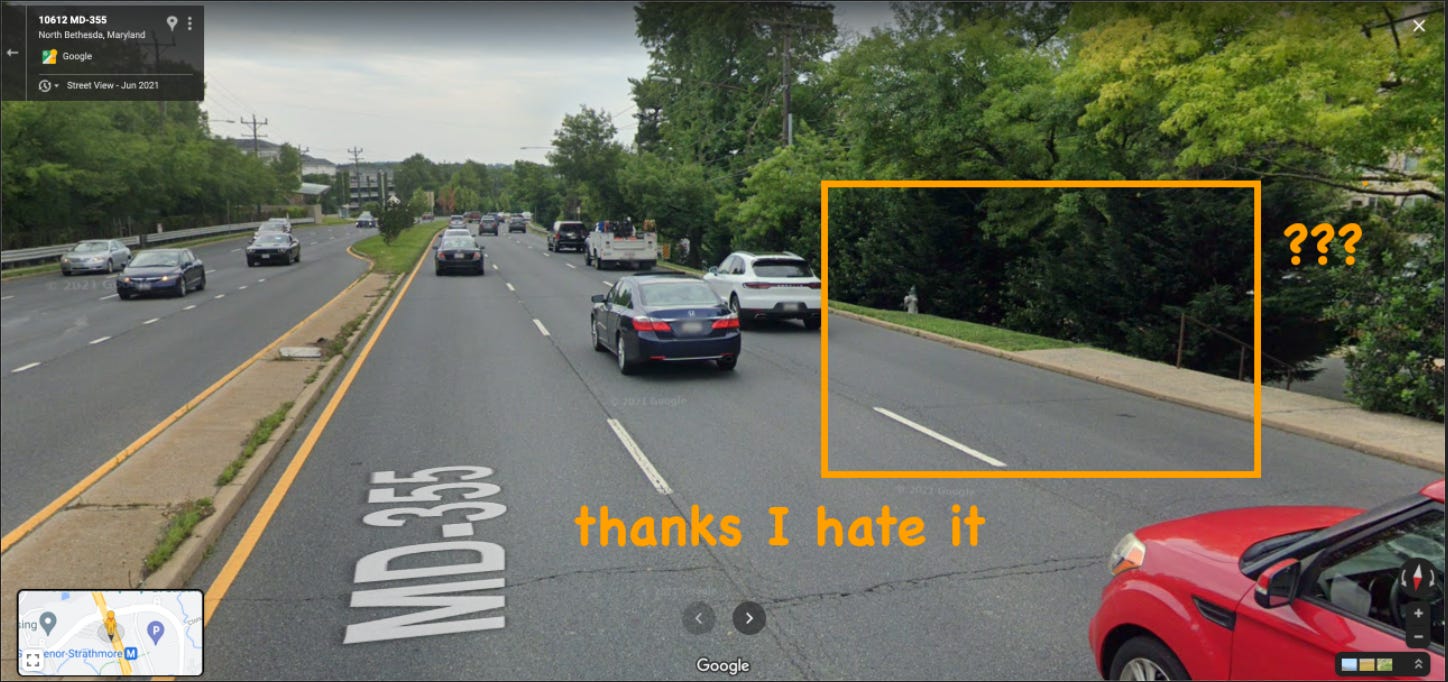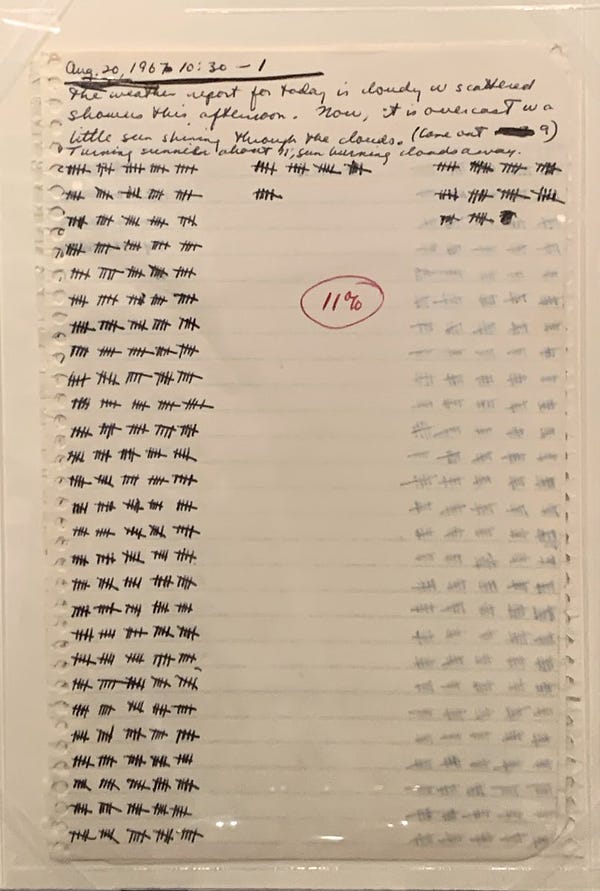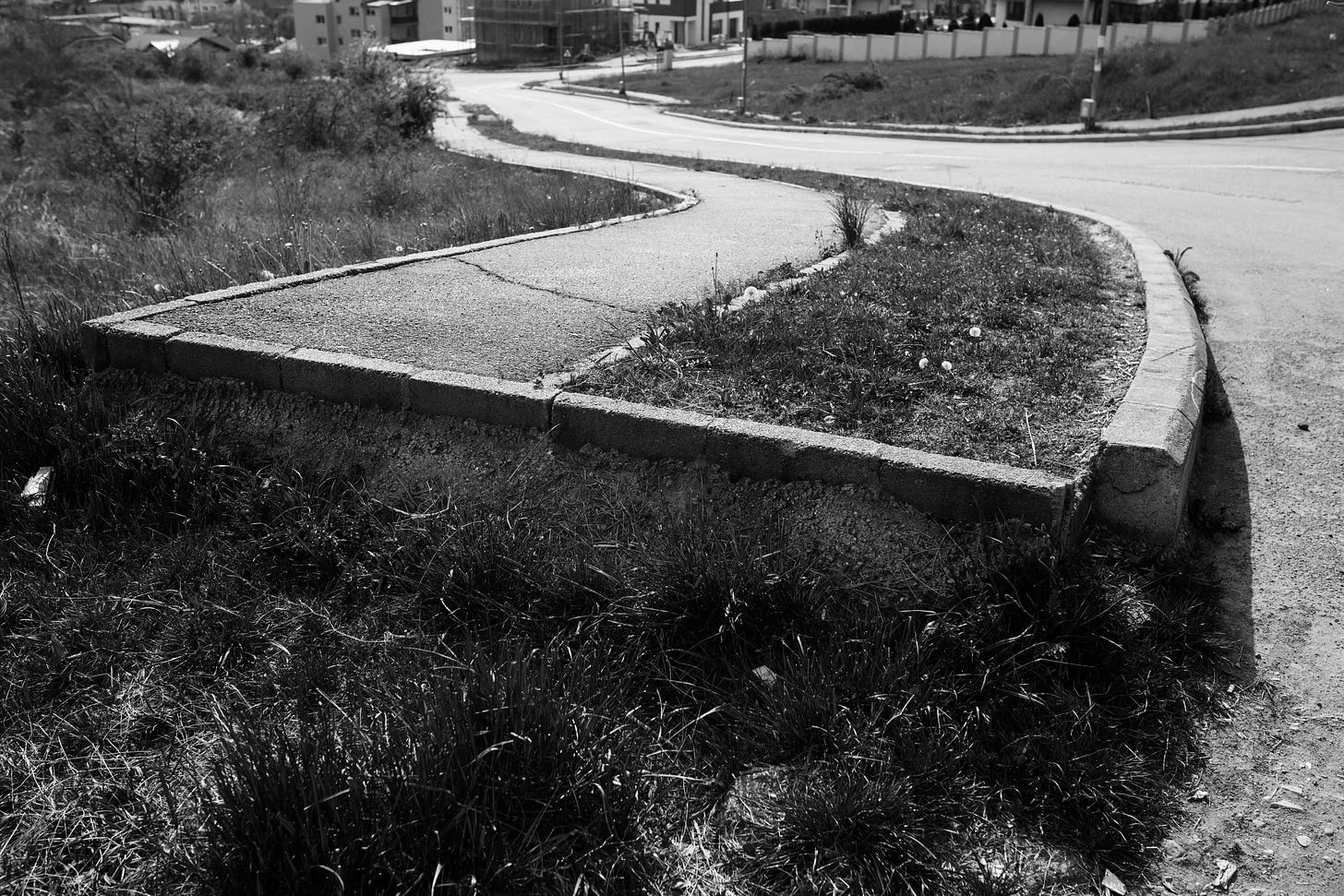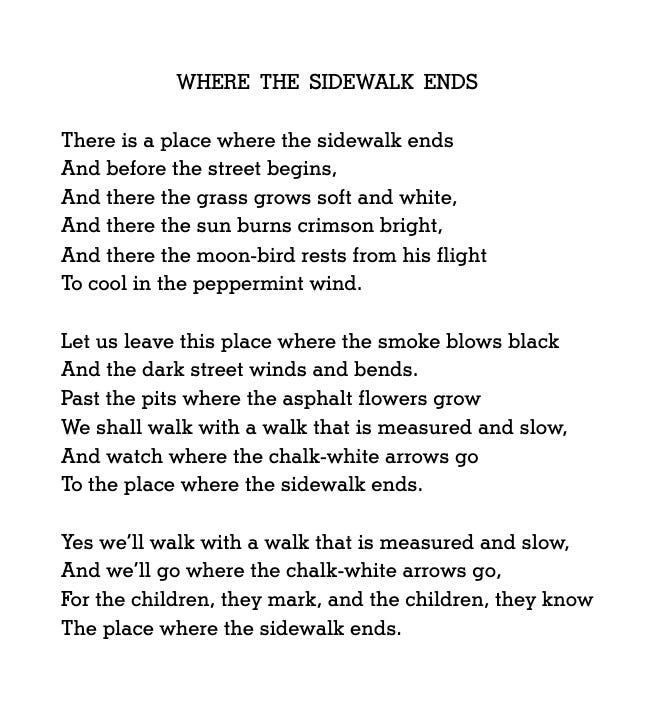1. “Past the pits where the asphalt flowers grow”
One of the core questions at the start of this project was how do you know when you’re a runner? I have an addendum to the answer in my first post. I don’t think you can really call yourself a runner until you’ve had the experience of setting out on a new route for the first time, maybe you’re traveling or exploring a new part of your city, and then the path you were on comes to an end and you find yourself stranded either on the side of the road or at a dead end. Often, at fault here is not the runner’s failure to map out a safe course, but poor urban planning to allow for a safe course to begin with. Bonus points if the sun is setting and you are miles away from any kind of landmark or safety.
This is mostly in jest, I’m sure there are plenty of people who are runners without gods or masters that get their miles in exclusively on tracks and treadmills. But this could also likely be blamed on bad urban design. If roads were more amenable and didn’t randomly end, who’s to say those track stars wouldn’t be out hitting the pavement instead.
While not a regular occurrence, I’ve personally found myself in the side-of-the-road-dead-end situation more than a few times. Back in 2016, while in Florida (where all great stories begin or go to get weird), my sisters and I had planned a day at Disney World, and I decided to get a jog in that morning before we left for the park. Looking back at the map, since my memory no longer serves me, I am trying to figure out what exactly I was running to that resulted in me ending up on the shoulder of Route 4 calling an Uber (since my sisters didn’t love me enough apparently) to rescue me from my own stupidity and the atrocity of modern urban planning that is the greater Disney complex of Lake Buena Vista, Florida. I did run under the Welcome to Disney World overpass sign though, which was dystopian in its own way.
I don’t recommend this method of discovering a running route won’t work even if it is a free country and there are no signs explicitly saying you can’t. (I did check, and it is in fact legal to walk on these major roads, according to Florida pedestrian traffic law: “If there are no sidewalks by a road or highway, Florida law 316.130(4) specifies that pedestrians may walk by the side of the road. In all circumstances, pedestrians must walk on the shoulder of the road.”)
But more recently it happened again during our speed test coming back down Rockville Pike towards D.C.. Just past the intersection of Tuckerman Lane on the opposite side from the bus stop the sidewalk abruptly ends. I ended up jaywalking to the other side while texts came through from the team warning me that I was going to need to cross.

The truth is, I was radicalized in 2012 by an excerpt from a book titled “Happy City,” that details how cul de sacs are ruining our health and happiness:
“The way we organize most cities actually encourages individuals to make choices that make everyone’s life harder,” Frank told me. “The system fails because it promises rewards for irrational behavior.”
Put simply, most people do not walk in American cities because cities have designed destinations out of reach. But they have also corroded the experience of walking. Road engineers have not even bothered to build sidewalks in many Atlanta suburbs.
…
Aesthetics matter. We walk farther when streets feel safe and interesting.
The same can be said for running and cycling. Cities without pedestrian thoroughfares and prioritized accessibility are ugly and kill the spirit of exploration. In short, Andre Leon Talley, may he rest in peace, put it best:
2. Say it with me: Boot Edge Edge
It is no secret I am a Mayor Pete fan, and I will not be apologizing for it. This November, he was the subject of ridicule—as he often is, and sometimes deserves—in this case though, he was unfairly maligned by Tucker Carlson and his ilk for having the correct take on Robert Moses making parkway bridges in New York too low for buses to pass so that lower-income people could not easily travel to the beach. In remarks at the White House, on Nov. 8, Transportation Secretary Buttigieg said:
“I’m still surprised that some people were surprised when I pointed to the fact that if a highway was built for the purpose of dividing a White and a Black neighborhood or if an underpass was constructed such that a bus carrying mostly Black and Puerto Rican kids to a beach — or that would’ve been — in New York was — was designed too low for it to pass by, that that obviously reflects racism that went into those design choices.”
The famous historical anecdote he is referencing is now being called into question by experts and was fact-checked by the Washington Post which decided not to rule one way or another on its veracity and basically concluded, “it’s complicated.”
I have a hard time taking “disputes” like this seriously, considering the ever-growing culture of denial and contention of various major historical events on the right fueled by conspiracy and racial bias. So I am inclined to take Caro and Buttigieg’s side on this. Especially when it’s being used in a way to dismiss inequality and efforts towards equity.


The fact remains that many cities and metropolitan areas in America underserve and keep their communities impoverished with individual-owned car-centric policies and planning that disproportionately impact minorities’ safety and access to higher quality resources.
For those who don’t run or are intimidated by it, the risks presented by dismal infrastructure are rational reasons not to venture out and stray far from home for the sake of exercising: it’s not you who is limited—the map and environment itself are against you.
This is part of the draw of running out in the desert. Its inhospitability is naturally occurring and organic—even if it is as dangerous as it is poetic—rather than politically designed and motivated by powerful men’s resentment for their fellow humanity.
3. Links
Already linked above, but I really want to emphasize this report from the Brookings Institute on how in order to build safe streets we must confront racism in urban design. In his latest column, Jamelle Bouie highlights this quote from W.E.B Du Bois: “One is astonished in the study of history at the recurrence of the idea that evil must be forgotten, distorted, skimmed over. The difficulty, of course, with this philosophy is that history loses its value as an incentive and example; it paints perfect men and noble nations, but it does not tell the truth.”
Check out Chris Arnade’s newsletter and Twitter where he writes about walking and the urban divide.
Weike Wang in the New Yorker on the masochistic pride in overworking: "Workaholics are addicted to the solace they find in extreme fatigue; it’s like the high that a marathon runner might get in her last mile. I can be utterly depleted yet energized by that depletion."
Outside interviewed legendary naturalist-ultrarunner Bernd Heinrich: “I feel that my lifetime miles—70,000 or whatever they are—have not hurt me one bit yet. Not mentally, not physically. The mental controls the physical, anyway. There aren’t two halves; there’s only one whole.”









I'm a Mayor Pete fan as well!
Thank you Hannah for bringing this to the surface again. I think your writing is extremely important.